
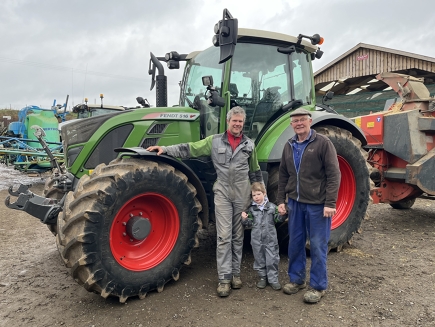






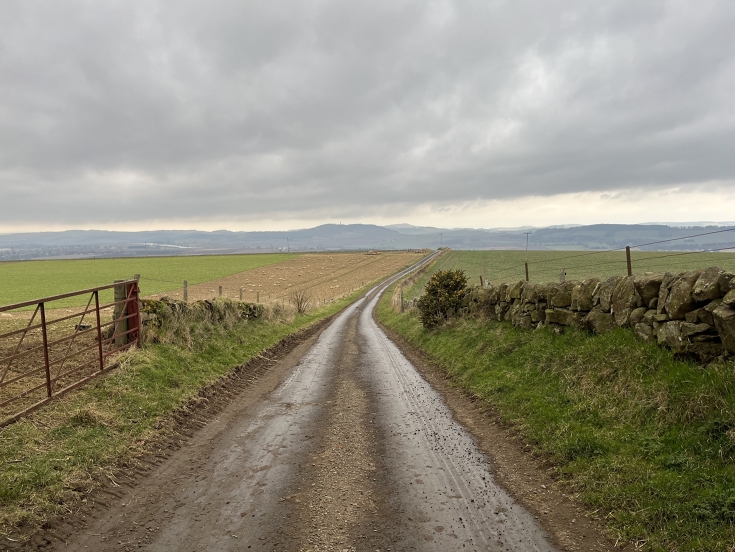
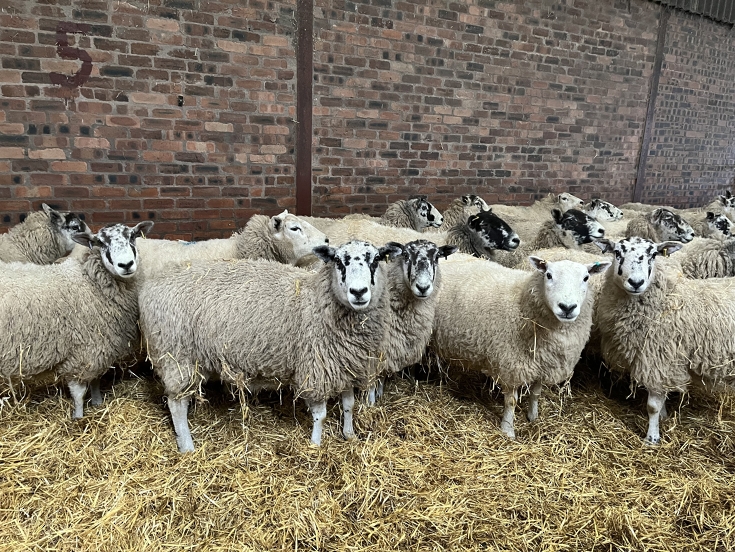
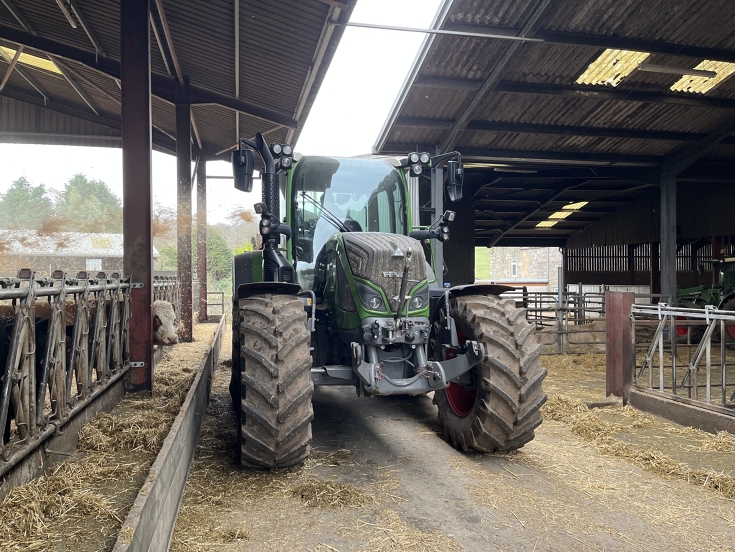
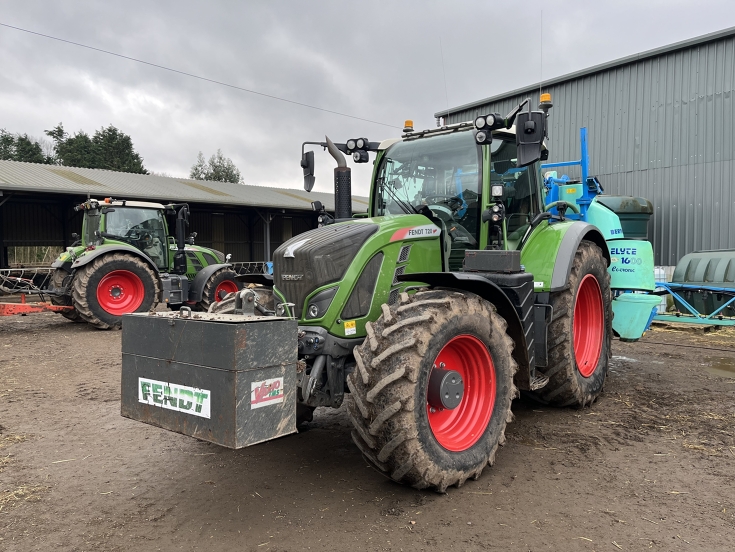
What do you use them for?
The 516 is all-rounder tractor. It’s a small tractor, but it’s got a good power to weight ratio. It can do the jobs around the buildings, work a six-meter mower in the front and the back, pull a five-furrow plough up and down a big hill – it fits the whole package. We do maybe have extremes for a smaller tractor, but I’ve done it for a lot of years now.
One is fitted with a loader, for feeding livestock, bedding, and mucking sheds for winter. All year round, they’ll be used as a transport in between farms, to the market, etc. With our cattle and sheep flow, there’s never not a period that something’s moving, so that creates quite a lot of work. The 415 will do a similar role to the 516, because that’s another small tractor.
The 720 is an everyday field tractor, so it will do the bulk of cultivating and sowing, and I’ve used it a couple times on the road. To plough 20 to 30 acres in a day is very achievable, and while the output of our bigger tractor is little greater, it would do more days than the smaller one.
In the summer, when the cattle aren’t inside, we’re growing crops, and trying to produce our own winter supplies. When we hit peak season, it’s every tractor on the go – which turns into spreading fertiliser, spraying, and then we get to mowing and harvesting the grass. All this needs to be baled and cleared to allow those fields to be sown again, and we have a Fendt tedder and a Fendt baler for that.
What are the biggest challenges you’re faced with?
Because of the nature of mixed farming, I’ll have my own deadlines to meet. There’ll be other farmers with no livestock, and they’ve got to be ready to go, but I know the day that I’ll get busy, because lambing and calving starts, and everything needs to be fitted around that. I’ve got to find the right balance, during the day – if I take all morning with livestock, and start spreading fertiliser at mid-day, I still have the same area to cover as if I’d started at eight o’clock.
Plus, in Scotland, you’re always battling against the weather. You’re not long in losing quite a considerable amount of time, when you’re out playing catch up, and fighting for dry days. I’m not the only one at it, and that’s maybe the other problem – there’s not the backup locally to ask for help.
There’ll be years where we’ll have more crops sown for the next year ahead’s harvest, that we have harvested from the previous, and that’s when it gets really difficult – when you try to combine bales, cut grains, process that through the dryer, before you’re sowing next year’s.
The biggest issue will always be labour. We’ve got to equip ourselves even better to cope with the lack of staff we’ve now got. We’ve got to invest in the right machines, so we can do a job more quickly or more easily. With the Fendt tedder, and the baler, we’ve gained considerable output.
How long have you been a customer of R&R Machinery?
My grandfather would have been a customer from Reekie, before it became R&R Machinery, all the way through to 1947. They took the Fendt brand on in 2002, we had a demonstration in 2003, and we bought our first Fendt the next year, from Sam Mercer (Sales Manager). I traded it against a new 820 in 2008, this time dealing with Steven.
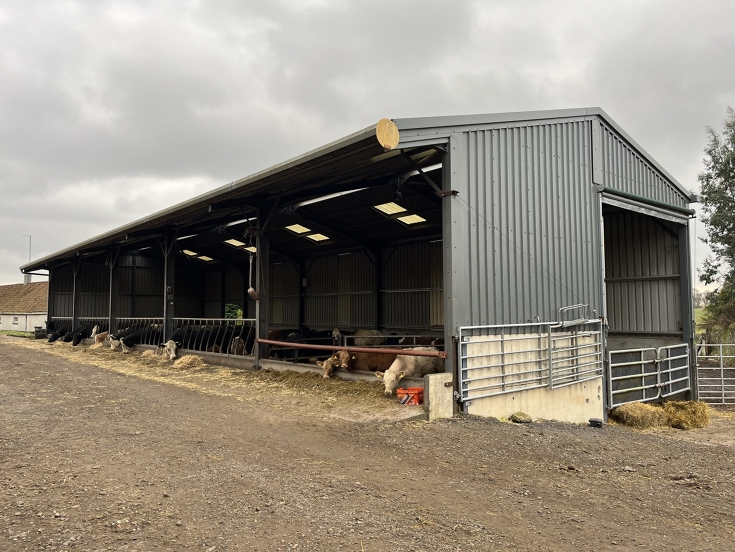
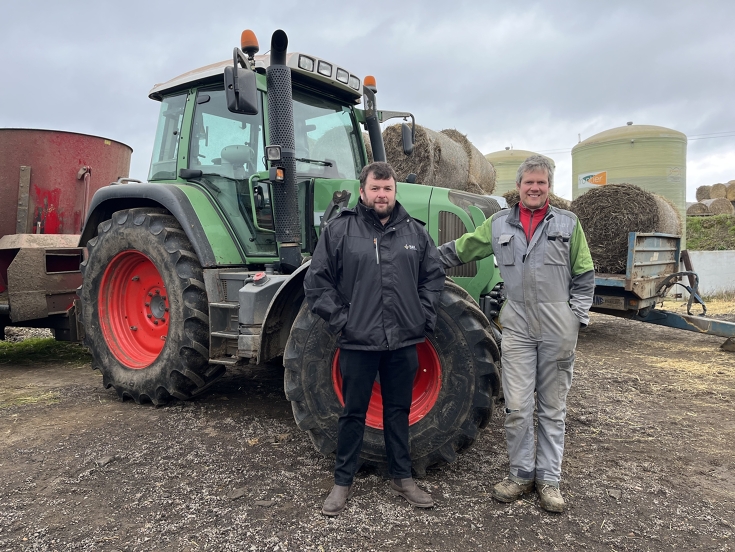
What makes it special to work with R&R Machinery?
I’m very local. I farm on both sides of Cupar, and my fields are only ten minutes away from the depot. I’ve always had a good relationship with the Sales, Parts and Service departments. Every machine is going to need attention, whether that’s twelve o’clock on a Saturday, or five at night, and I can always get a quick question answered, or I know I will get help shortly after.
It’s the same if I buy a new machine I’m not familiar with, like two years ago when we bought the Fendt round baler. I don’t know if anybody understands a new machine fully before they get it – especially with the new generation of tractors, which are equipped with GPS and ISOBUS. Both are a huge improvement to the operator’s environment, in terms of productivity and output, but you’re going to need help for the set up if you want to reap the full benefits.
What are the future developments for this place?
It’s a hard one, I’m happy with what I’ve got. The continuity of the business is assured with my son, Peter, who never tires of wearing his own Fendt boiler suit and playing with his model tractor!